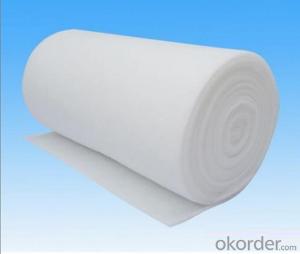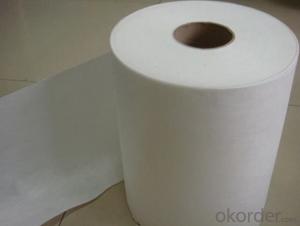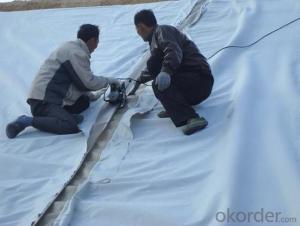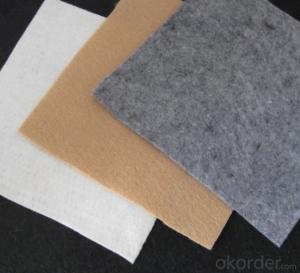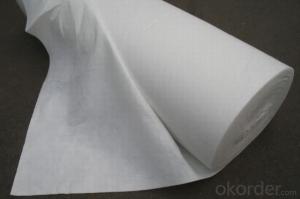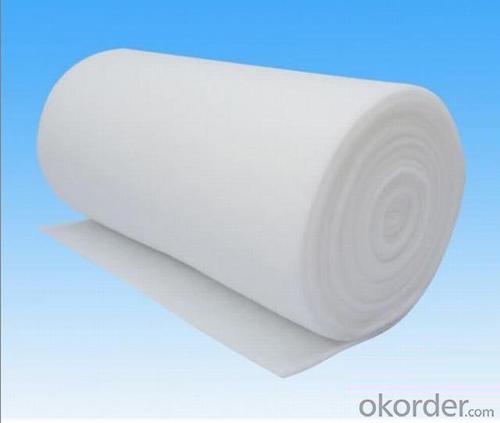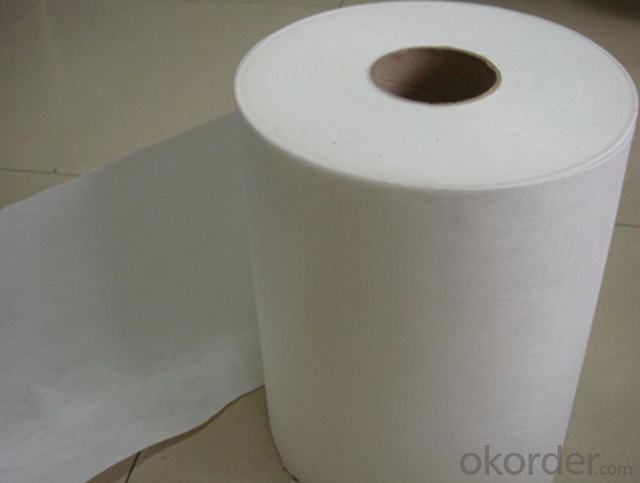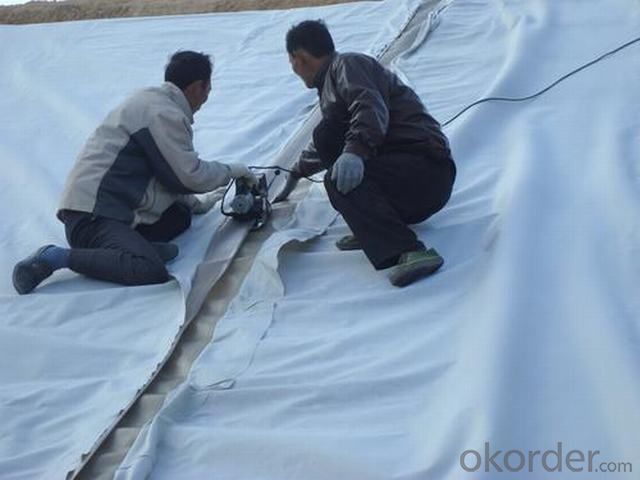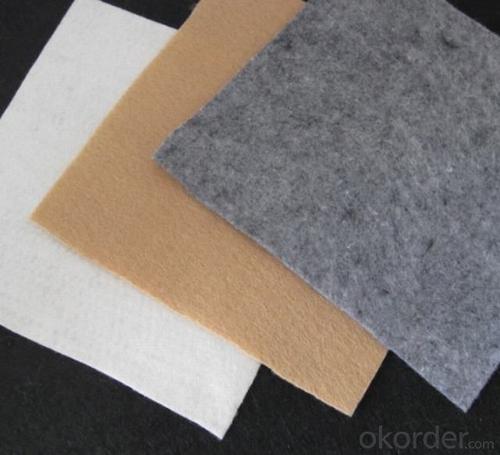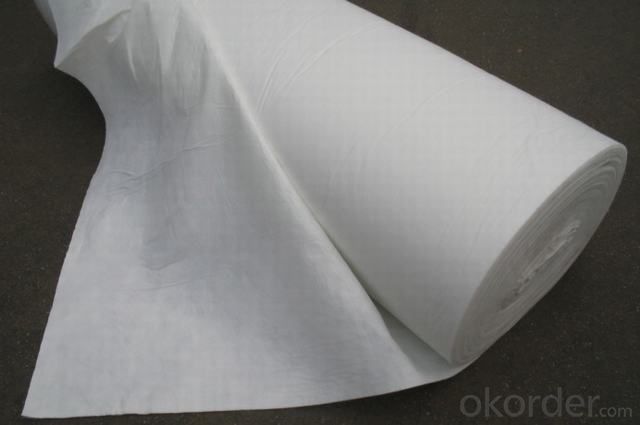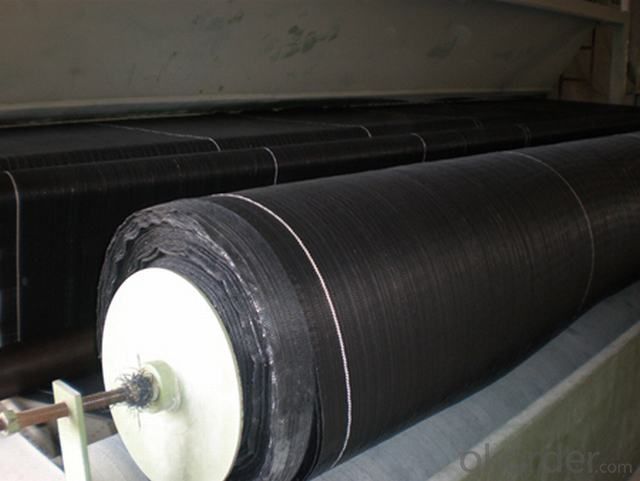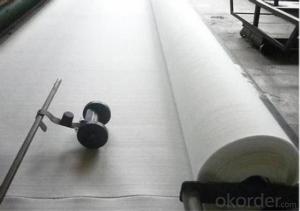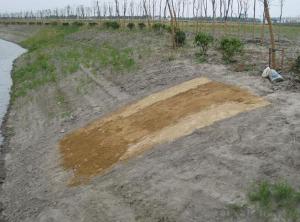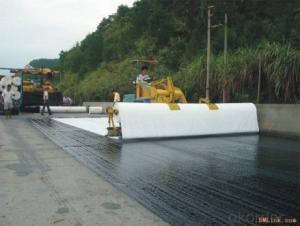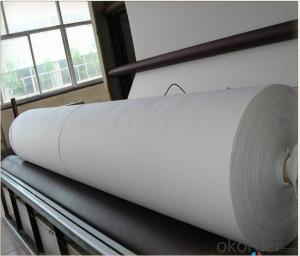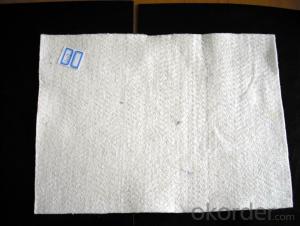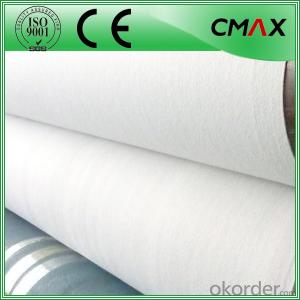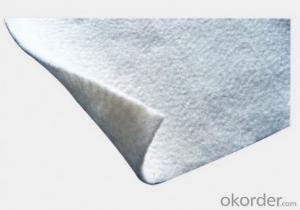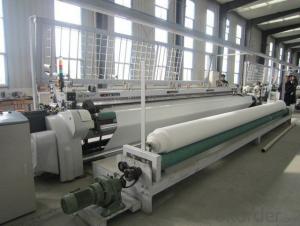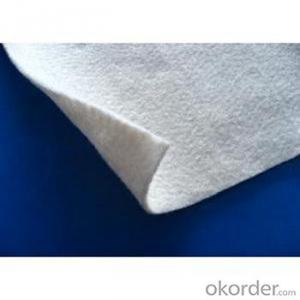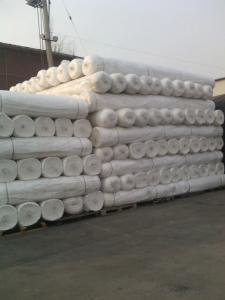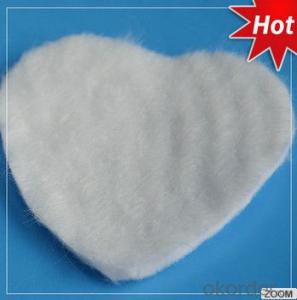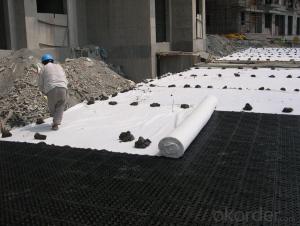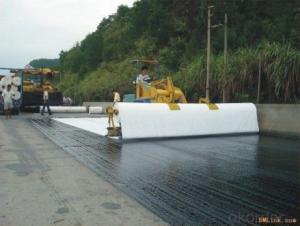Geogrid With Geotextile - Pet Continuous Filament Spunbond Needle Punched Nonwoven Geotextile for Drainage Function
- Loading Port:
- Qingdao
- Payment Terms:
- TT OR LC
- Min Order Qty:
- 20000 m²
- Supply Capability:
- 1500000 m²/month
OKorder Service Pledge
OKorder Financial Service
You Might Also Like
Specifications of PET Continuous Filament Spunbond Needle Punched Nonwoven Geotextile for Drainage Fuction:
1) Weight / Mass: 100g/m2-1500g/m2
2) Width: Within 8 m (1m-8m)
3) Length: 50m-100m/roll (as request)
4) Material: PP / PET
5) Color: Black , white , grey and other color
6) Certificate: CE/ISO9001 , ISO14001
7) Manufacturing method: nonwoven / woven
8) The Biggest geotextile manufacturer/factory in China for many years
Characteristic of PET Continuous Filament Spunbond Needle Punched Nonwoven Geotextile:
--It is produced by spinning, needle punching process with super-strength polyester chip, so that the total carrying capacity is further raised.
--It can keep primary characteristic for more long time, not liable to deform and break down.
--It shows great characteristics at cid and alkali resistance, insect resistance and anti-mycotic.
--Good water permeability.
--Withstand High temperature and freezing, and is able to adapt to the different outer environment.
--Light in weight, and can be packed as buyer require. So it is convenient to transport , storage and construct.
Technical Data Sheet of PET Continuous Filament Spunbond Needle Punched Nonwoven Geotextile for Drainage Fuction:
PET continuous filament spunbond needle punched nonwoven geotextile(representative average data.) | |||||||||
Test Item/Unit/No. | HY100 | HY150 | HY200 | HY250 | HY300 | Test Method | |||
Mechanical Properties | |||||||||
Tensile Strength | CD | kn/m | 4.8 | 8.3 | 10.9 | 14.5 | 18 | ASTM D 4595 | |
MD | 7 | 12 | 14 | 18 | 22 | ||||
Elongation at maximum load | CD | % | 65 | 64 | 63 | 62 | 61 | ||
MD | 64 | 63 | 62 | 61 | 60 | ||||
Grab Strength | CD | kn ≥ | 0.36 | 0.58 | 0.87 | 1.08 | 1.35 | ASTM D 4632 | |
MD | 0.42 | 0.78 | 1.07 | 1.33 | 1.6 | ||||
Grab Elongation | CD | % | 55 | 55 | 59 | 59 | 60 | ||
MD | 50 | 50 | 51 | 51 | 53 | ||||
Trapezoidal Tear | CD | kn ≥ | 0.16 | 0.23 | 0.31 | 0.39 | 0.46 | ASTM D 4533 | |
MD | 0.245 | 0.31 | 0.42 | 0.46 | 0.55 | ||||
Burst Strength-CBR plunger method | kn ≥ | 0.85 | 1.47 | 2.3 | 2.8 | 3.3 | ASTM D 6241 | ||
Puncture resistance | n ≥ | 220 | 320 | 430 | 540 | 650 | ASTM D 4833 | ||
Mullen Burst | Mpa | 1.2 | 1.8 | 2.3 | 2.8 | 3.3 | ASTM D 3786 | ||
Cone drop resistance(hole-Φ)Dynamic perforation diameter | mm | 34 | 30 | 26 | 22 | 19 | BS EN 918-1996 | ||
Hydraulic Properties | |||||||||
Flow Rate,Q100 | L/s/m² | 200 | 210 | 180 | 150 | 140 | ASTM D 4491 | ||
Permeability | cm/s | 0.48 | 0.43 | 0.39 | 0.36 | 0.34 | |||
Apparent Opening Size O95 | mm ≤ | 0.13 | 0.12 | 0.12 | 0.11 | 0.11 | ASTM D 4751 | ||
Apparent Opening Size O90 | mm ≤ | 0.12 | 0.11 | 0.11 | 0.1 | 0.1 | |||
Physical Identification Properties | |||||||||
Thickness 2KPa | mm | 1.1 | 1.3 | 1.8 | 2.5 | 2.9 | ASTM D 5199 | ||
Mass per unit area | g/m² | 100 | 150 | 200 | 250 | 300 | ASTM D 5261 | ||
Width | m | 2/3/6/ | 2/3/6/ | 2/3/6/ | 2/3/6/ | 2/3/6/ | |||
FAQ:
What is the main application of PET Continuous Filament Spunbond Needle Punched Nonwoven Geotextile?
The main application of our PET Continuous Filament Spunbond Needle Punched Nonwoven Geotextile is as follows: The highway, railway, soil-stone dam, breakwater, airport, backfill soil of retaining wall, slope protection, etc.
Where is your main market?
Our main market is in Middle East, South America and some African countries.
What is your advantages for PET Continuous Filament Spunbond Needle Punched Nonwoven Geotextile?
One of the largest manufacturer of PET Continuous Filament Spunbond Needle Punched Nonwoven Geotextile for Construction with advanced equipment, big production capacity and excellent quality.
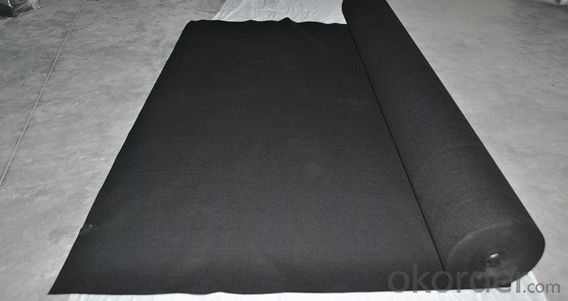
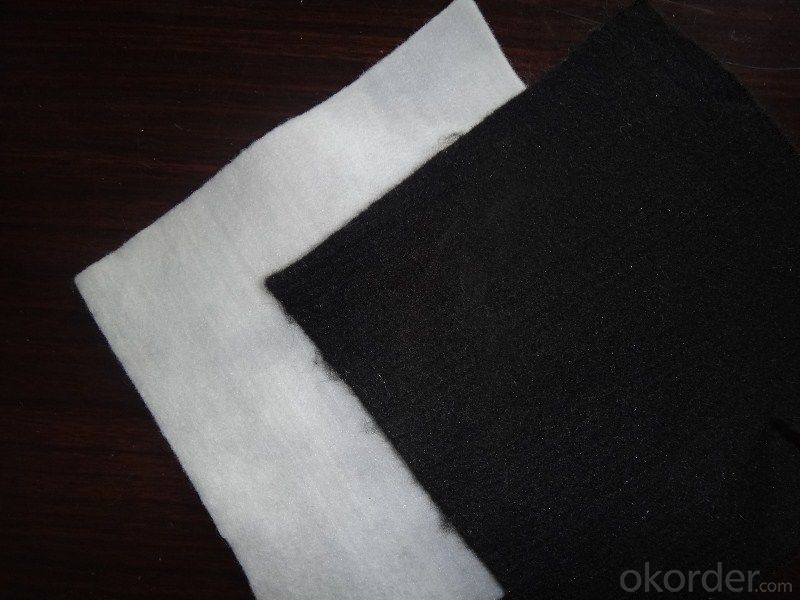
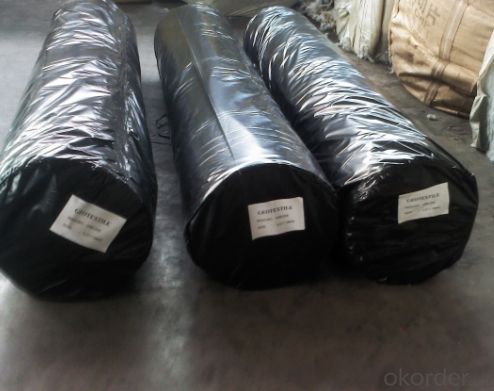
- Q: Water board and water pipes and quick overburden trees
- Set aside the road to pull the car, little by little to fill the soil, I am specializing in the production of geotextile, drainage board, wish smooth
- Q: Geotextile lap joint with special equipment? How is the price
- Geotextile stitching is a professional equipment, professional equipment name for the portable sewing machine, the price is cheaper, generally ranging from 100-300 yuan. Look like this:
- Q: What are the uses of acupuncture geotextiles?
- Acupuncture geotextile is divided into filament spunbonded acupuncture non-woven geotextile and polyester staple acupuncture non-woven geotextile two. Filament spunbond acupuncture non-woven geotextile with high-quality polyester chips through high-temperature melting, spinning into a network, acupuncture into cloth production, filament spunbond acupuncture non-woven geotextile has a high tensile strength, Anti-tear strength, anti-breaking strength, in the project to play the role of reinforcement protection, generally used in roads, railways, dams, water conservancy construction, tunnels, landfills and other projects. Polyester staple acupuncture non-woven geotextile polyester staple fiber made by acupuncture, polyester staple acupuncture non-woven geotextile has a good water filter performance, the price is relatively low, in the project to play a reinforced protection, The role of filtration, generally used in civil engineering isolation, filtration, drainage sites.
- Q: What are the factors affecting the performance of geotextiles?
- There are several factors that can affect the performance of geotextiles, including the type of material used, the manufacturing process, the installation method, the environmental conditions, and the design considerations. The strength, durability, and permeability of the geotextile, as well as its ability to withstand chemical and biological degradation, play a significant role in its performance. Additionally, factors such as soil characteristics, loading conditions, and the presence of water or chemicals can also impact the performance of geotextiles. Proper selection, installation, and maintenance are crucial in optimizing the performance and longevity of geotextiles.
- Q: Geotextile wholesale price of how much money, geotextile fabric manufacturers latest offer
- Geotextile wholesale, ranging from 5000-9000 yuan a ton. Geotextile manufacturers to answer your questions
- Q: Geotextile construction requirements of the use of adhesive specifications
- Hello, geotextile construction is very simple, laying with less cutting, less overlap for the principle. Take the head set aside about 25 cm. Using double take the head, sew two lines. This is in principle to ask this, the general construction can not do so carefully. Huazhi geotechnical materials manufacturers to answer, need to talk.
- Q: Geotextile how the weight of how many meters
- Cut with a pair of scissors 1 square meters, and then weighed, the total weight ÷ weight per square meter ÷ geotextile width = length meter (because the weight of geotextile deviation, the calculation results can only be roughly the same, not subject)
- Q: What are the challenges associated with the installation of geotextiles?
- There are several challenges associated with the installation of geotextiles. Firstly, one challenge is ensuring proper placement and anchoring of the geotextile material. It requires skilled labor and precise positioning to avoid any wrinkles or folds that could compromise its effectiveness. Secondly, geotextiles are often installed in harsh environments, such as steep slopes or areas with high water flow. This can make it difficult to secure the geotextile and prevent it from shifting or being damaged during installation. Another challenge is the potential for clogging or blockage of geotextiles due to fine particles or sediment. This can reduce their permeability and overall effectiveness, requiring regular inspection and maintenance. Lastly, the selection of the appropriate geotextile material for a specific application is crucial. Factors such as soil type, load requirements, and environmental conditions need to be carefully considered to ensure the geotextile can withstand the intended use and provide the desired performance. Overall, proper installation techniques, site-specific considerations, and regular maintenance are essential to overcome the challenges associated with the installation of geotextiles and maximize their effectiveness.
- Q: What are the environmental impacts of using geotextiles?
- Geotextiles can have both positive and negative environmental impacts. On the positive side, they can help prevent soil erosion, improve water quality by filtering pollutants, and promote vegetation growth. Additionally, they can reduce the need for chemical treatments and provide a sustainable alternative to traditional construction materials. However, geotextiles are typically made from synthetic materials like polyester or polypropylene, which are derived from non-renewable resources and can release microplastics into the environment. Moreover, the production and disposal of geotextiles can contribute to greenhouse gas emissions and waste generation. Therefore, careful consideration of the environmental trade-offs is necessary when using geotextiles.
- Q: Can geotextiles be used in green or sustainable building practices?
- Yes, geotextiles can be used in green or sustainable building practices. Geotextiles are often utilized as an eco-friendly solution for erosion control, soil stabilization, and filtration in construction projects. They help reduce the need for excessive excavation and grading, minimize erosion and sediment runoff, and promote healthier soil conditions. Additionally, geotextiles can be made from recycled materials or natural fibers, further enhancing their sustainability credentials.
Send your message to us
Geogrid With Geotextile - Pet Continuous Filament Spunbond Needle Punched Nonwoven Geotextile for Drainage Function
- Loading Port:
- Qingdao
- Payment Terms:
- TT OR LC
- Min Order Qty:
- 20000 m²
- Supply Capability:
- 1500000 m²/month
OKorder Service Pledge
OKorder Financial Service
Similar products
Hot products
Hot Searches
Related keywords
